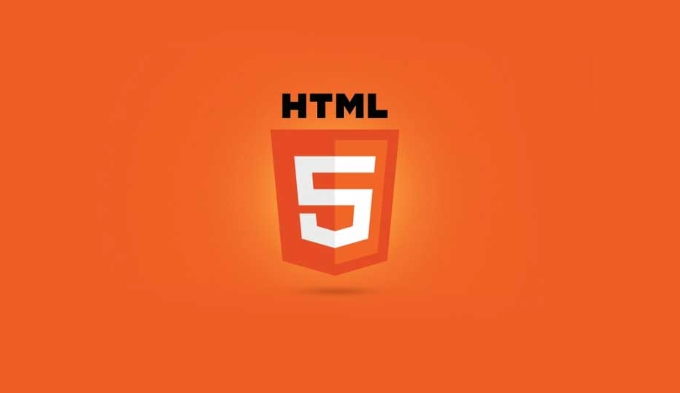The HTML5 statement must appear at the beginning of the web page and is used to inform the browser to parse the page with the HTML5 standard to avoid entering weird mode. 1. It is not an HTML tag but a declaration. It must be located on the first line of the file and cannot have anything in front of it; 2. It is case-insensitive, and there is no need to close the tag or add attributes; 3. When generating in dynamic languages, you must ensure that there is no unnecessary interference in the output; 4. You can confirm whether it is effective by viewing the source code, developer tools or online verification tools. Proper use ensures that the page renders consistently across different browsers.

The statement is actually very simple, but many newbies will wonder when they first start writing web pages: Why must it be added? What exactly does it play? In fact, it can be explained in one sentence - <strong>it tells the browser which HTML standard to use to parse the page</strong> . If you don't write it or write it wrong, some browsers may enter "weird mode", causing unexpected problems with the page layout and behavior.

Let’s start from several common questions and explain clearly the use and precautions of HTML5 doctype.

What is ?
is not an HTML tag, but a declaration that is placed at the beginning of the HTML document (before the <code> tag). Its purpose is to tell the browser the HTML version used by the current document so that the browser can render the page correctly.
In HTML5, this statement becomes very concise:

<!DOCTYPE html>
This is the only form to remember. Unlike HTML4 or XHTML before, where you need to write a long list of DTDs (document type definitions), now only this line is enough.
Why do you have to write ?
There are two main reasons:
- Quirks Mode : If you do not write doctype or write it incorrectly, some browsers will enter the "weird mode" that is compatible with old web pages. At this time, the box model, layout method, etc. of CSS may be different from the standard mode.
- Ensure consistent behavior : Modern browsers parse HTML and CSS more consistently in standard mode, helping you write pages that perform consistently across browsers.
For example, without doctype, the IE browser may handle margin and padding in a completely different way, causing your layout to go wrong.
What should I pay attention to when writing ?
Although this statement seems simple, there are still several small details that are easily overlooked:
- It must appear on the first line of the HTML file and cannot be preceded by anything (including spaces or comments);
- It is not case sensitive, so it is no problem to write it as
; - No closing tags are required, no quotation marks or other attributes are required;
- If you generate HTML pages in PHP or other dynamic languages, make sure there is no extra content (such as error messages or whitespace characters) before the output, otherwise the doctype will be shifted.
For example, if you accidentally type an extra space in a PHP file before opening the <?php tag, the browser will not recognize the doctype, and enter weird mode.
How to check whether doctype is effective in actual development?
You can confirm in the following ways:
- Right-click in the browser to view the page source code and confirm whether the first line is
; - Use the developer tool (F12 or right-click to select "Check"), and see if the rendering mode of the page is "Standards mode" in the "Elements" panel;
- Use some online tools (such as W3C Verification Services) to check whether the HTML structure is standardized.
If you see that the browser shows "Quirks Mode", then you have to go back and check whether your doctype is written correctly and whether there is any unnecessary content in front of it.
Basically that's it. Although it only has one line, it is one of the basics for the normal display of the entire web page. Not complicated, but easily overlooked.
The above is the detailed content of Understanding the HTML5 doctype declaration. For more information, please follow other related articles on the PHP Chinese website!

Hot AI Tools

Undress AI Tool
Undress images for free

Undresser.AI Undress
AI-powered app for creating realistic nude photos

AI Clothes Remover
Online AI tool for removing clothes from photos.

Clothoff.io
AI clothes remover

Video Face Swap
Swap faces in any video effortlessly with our completely free AI face swap tool!

Hot Article

Hot Tools

Notepad++7.3.1
Easy-to-use and free code editor

SublimeText3 Chinese version
Chinese version, very easy to use

Zend Studio 13.0.1
Powerful PHP integrated development environment

Dreamweaver CS6
Visual web development tools

SublimeText3 Mac version
God-level code editing software (SublimeText3)

Hot Topics
 Audio and Video: HTML5 VS Youtube Embedding
Jun 19, 2025 am 12:51 AM
Audio and Video: HTML5 VS Youtube Embedding
Jun 19, 2025 am 12:51 AM
HTML5isbetterforcontrolandcustomization,whileYouTubeisbetterforeaseandperformance.1)HTML5allowsfortailoreduserexperiencesbutrequiresmanagingcodecsandcompatibility.2)YouTubeofferssimpleembeddingwithoptimizedperformancebutlimitscontroloverappearanceand
 What is the purpose of the input type='range'?
Jun 23, 2025 am 12:17 AM
What is the purpose of the input type='range'?
Jun 23, 2025 am 12:17 AM
inputtype="range" is used to create a slider control, allowing the user to select a value from a predefined range. 1. It is mainly suitable for scenes where values ??need to be selected intuitively, such as adjusting volume, brightness or scoring systems; 2. The basic structure includes min, max and step attributes, which set the minimum value, maximum value and step size respectively; 3. This value can be obtained and used in real time through JavaScript to improve the interactive experience; 4. It is recommended to display the current value and pay attention to accessibility and browser compatibility issues when using it.
 Adding drag and drop functionality using the HTML5 Drag and Drop API.
Jul 05, 2025 am 02:43 AM
Adding drag and drop functionality using the HTML5 Drag and Drop API.
Jul 05, 2025 am 02:43 AM
The way to add drag and drop functionality to a web page is to use HTML5's DragandDrop API, which is natively supported without additional libraries. The specific steps are as follows: 1. Set the element draggable="true" to enable drag; 2. Listen to dragstart, dragover, drop and dragend events; 3. Set data in dragstart, block default behavior in dragover, and handle logic in drop. In addition, element movement can be achieved through appendChild and file upload can be achieved through e.dataTransfer.files. Note: preventDefault must be called
 How can you animate an SVG with CSS?
Jun 30, 2025 am 02:06 AM
How can you animate an SVG with CSS?
Jun 30, 2025 am 02:06 AM
AnimatingSVGwithCSSispossibleusingkeyframesforbasicanimationsandtransitionsforinteractiveeffects.1.Use@keyframestodefineanimationstagesforpropertieslikescale,opacity,andcolor.2.ApplytheanimationtoSVGelementssuchas,,orviaCSSclasses.3.Forhoverorstate-b
 HTML audio and video: Examples
Jun 19, 2025 am 12:54 AM
HTML audio and video: Examples
Jun 19, 2025 am 12:54 AM
Audio and video elements in HTML can improve the dynamics and user experience of web pages. 1. Embed audio files using elements and realize automatic and loop playback of background music through autoplay and loop properties. 2. Use elements to embed video files, set width and height and controls properties, and provide multiple formats to ensure browser compatibility.
 What is WebRTC and what are its main use cases?
Jun 24, 2025 am 12:47 AM
What is WebRTC and what are its main use cases?
Jun 24, 2025 am 12:47 AM
WebRTC is a free, open source technology that supports real-time communication between browsers and devices. It realizes audio and video capture, encoding and point-to-point transmission through built-in API, without plug-ins. Its working principle includes: 1. The browser captures audio and video input; 2. The data is encoded and transmitted directly to another browser through a security protocol; 3. The signaling server assists in the initial connection but does not participate in media transmission; 4. The connection is established to achieve low-latency direct communication. The main application scenarios are: 1. Video conferencing (such as GoogleMeet, Jitsi); 2. Customer service voice/video chat; 3. Online games and collaborative applications; 4. IoT and real-time monitoring. Its advantages are cross-platform compatibility, no download required, default encryption and low latency, suitable for point-to-point communication
 How to create animations on a canvas using requestAnimationFrame()?
Jun 22, 2025 am 12:52 AM
How to create animations on a canvas using requestAnimationFrame()?
Jun 22, 2025 am 12:52 AM
The key to using requestAnimationFrame() to achieve smooth animation on HTMLCanvas is to understand its operating mechanism and cooperate with Canvas' drawing process. 1. requestAnimationFrame() is an API designed for animation by the browser. It can be synchronized with the screen refresh rate, avoid lag or tear, and is more efficient than setTimeout or setInterval; 2. The animation infrastructure includes preparing canvas elements, obtaining context, and defining the main loop function animate(), where the canvas is cleared and the next frame is requested for continuous redrawing; 3. To achieve dynamic effects, state variables, such as the coordinates of small balls, are updated in each frame, thereby forming
 How to check if a browser can play a specific video format?
Jun 28, 2025 am 02:06 AM
How to check if a browser can play a specific video format?
Jun 28, 2025 am 02:06 AM
To confirm whether the browser can play a specific video format, you can follow the following steps: 1. Check the browser's official documents or CanIuse website to understand the supported formats, such as Chrome supports MP4, WebM, etc., Safari mainly supports MP4; 2. Use HTML5 tag local test to load the video file to see if it can play normally; 3. Upload files with online tools such as VideoJSTechInsights or BrowserStackLive for cross-platform detection. When testing, you need to pay attention to the impact of the encoded version, and you cannot rely solely on the file suffix name to judge compatibility.






